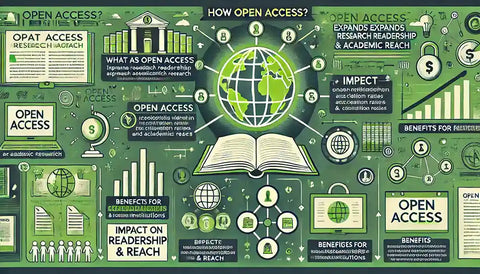Introduction
In the evolving landscape of academic and commercial publishing, authors now have multiple avenues to share their work. One such option is hybrid publishing, which blends elements of both traditional and self-publishing. This model offers flexibility in terms of editorial control, financial investment, and distribution, making it an appealing option for many authors. However, hybrid publishing also comes with potential drawbacks. This article explores what hybrid publishing entails, its advantages and disadvantages, and how authors can determine whether it is the right choice for their work.
What is Hybrid Publishing?
Hybrid publishing is a publishing model that incorporates aspects of both traditional publishing and self-publishing. Unlike traditional publishing, where publishers cover all costs and retain rights over the book, or self-publishing, where authors manage all aspects of publishing, hybrid publishing operates on a shared-cost model. Authors typically contribute financially to the production and marketing of their work while still benefiting from some level of editorial and distribution support from the publisher.
Hybrid publishers vary widely in their services and business models, but they generally offer:
- Professional editorial services (editing, proofreading, and formatting)
- Cover design and typesetting
- ISBN registration and copyright assistance
- Marketing and distribution support
- Access to print-on-demand and eBook platforms
How Does Hybrid Publishing Work?
Hybrid publishers offer a middle ground between self-publishing and traditional publishing. The process typically involves the following steps:
- Manuscript Submission and Evaluation – Authors submit their manuscript, which may undergo a selection process to ensure quality standards.
- Author Contribution – Unlike traditional publishing, authors pay a fee to cover part of the production and marketing costs.
- Editing and Design – The publisher provides professional editorial services, cover design, and formatting.
- Printing and Distribution – The book is made available through various distribution channels, including bookstores, online retailers (Amazon, Barnes & Noble), and eBook platforms.
- Marketing and Promotion – Authors and publishers collaborate on promotional activities, such as book launches, advertising, and media outreach.
Hybrid publishing models often grant higher royalty rates than traditional publishing, allowing authors to retain more earnings per book sale while still benefiting from the publisher’s expertise and industry connections.
Pros of Hybrid Publishing
1. Higher Creative Control
Unlike traditional publishing, where editors and publishers have the final say on content, cover design, and marketing strategies, hybrid publishing allows authors to retain more creative control over their work. This ensures that the final product aligns with the author’s vision.
2. Professional Quality Services
Hybrid publishers provide high-quality editorial, design, and marketing services that rival traditional publishing. This ensures that books meet industry standards and have a polished, professional appearance.
3. Faster Time to Market
Traditional publishing can take months or even years from manuscript acceptance to publication. In contrast, hybrid publishing significantly reduces this timeline, enabling authors to publish their work within a few months.
4. Better Royalty Rates
Traditional publishing typically offers royalties of 10-15% of book sales, whereas hybrid publishing allows authors to retain 50-80% of profits. This makes it a financially attractive option for authors who anticipate strong book sales.
5. Distribution and Marketing Support
Self-published authors often struggle with marketing and distribution. Hybrid publishers offer structured marketing plans, PR services, and access to established retail networks, increasing the book’s visibility and sales potential.
6. Retention of Copyright
Many hybrid publishers allow authors to retain copyright ownership, meaning they can republish, translate, or create adaptations of their work without restrictions.
Cons of Hybrid Publishing
1. High Upfront Costs
One of the biggest drawbacks of hybrid publishing is the financial investment required. Authors may need to pay anywhere from $1,500 to $10,000 for services such as editing, design, and marketing. For emerging authors, this can be a significant financial burden.
2. Risk of Low Return on Investment (ROI)
While higher royalty rates are appealing, there is no guarantee that a book will sell well enough to recoup the initial investment. Authors must actively engage in marketing and sales efforts to maximize returns.
3. Variable Quality Among Hybrid Publishers
Not all hybrid publishers are reputable. Some operate with minimal editorial standards or provide limited distribution support, resembling vanity presses that profit primarily from author payments rather than book sales. Authors must research potential publishers carefully.
4. Marketing Expectations on the Author
Although hybrid publishers provide marketing support, authors are often expected to take on a significant portion of promotion efforts, including social media engagement, book signings, and networking.
5. Limited Prestige Compared to Traditional Publishing
Despite offering professional services, hybrid publishing still carries a stigma in some academic and literary circles. Books published through hybrid models may not receive the same recognition or eligibility for major literary awards as traditionally published books.
How to Choose a Reputable Hybrid Publisher
Given the rise of hybrid publishers, it is essential for authors to evaluate potential publishers before committing. Here are some key considerations:
- Check for Industry Recognition – Look for memberships in reputable organizations such as the Independent Book Publishers Association (IBPA) or the Alliance of Independent Authors (ALLi).
- Review Past Publications – Examine books previously published by the company to assess quality and success rates.
- Understand the Contract – Ensure that royalty rates, author rights, and distribution terms are clearly defined.
- Avoid Vanity Presses – Publishers that charge high fees but provide minimal marketing and distribution support should be avoided.
- Speak with Other Authors – Reach out to writers who have worked with the publisher to get firsthand insights on their experience.
Is Hybrid Publishing Right for You?
Hybrid publishing is best suited for authors who:
- Are willing to invest financially in their book’s production.
- Want faster publication timelines compared to traditional publishing.
- Seek higher royalty rates and more control over their work.
- Have a strong marketing plan or are willing to promote their book actively.
- Prefer professional editorial support without full self-publishing responsibility.
Authors who prioritize prestige, wide-scale distribution through major publishing houses, or wish to avoid upfront costs may find traditional publishing a better fit. On the other hand, those who prefer complete autonomy over the publishing process and minimal financial investment may consider self-publishing instead.
Conclusion
Hybrid publishing offers a compelling alternative to traditional and self-publishing, balancing creative control, professional quality, and market accessibility. While it provides advantages such as higher royalties, faster publication, and quality editorial services, it also requires financial investment and active marketing efforts from authors. Before committing to a hybrid publisher, authors should thoroughly research their options, assess the costs and benefits, and align their publishing choice with their personal and professional goals. By making an informed decision, authors can maximize the impact and success of their work in the publishing world.








